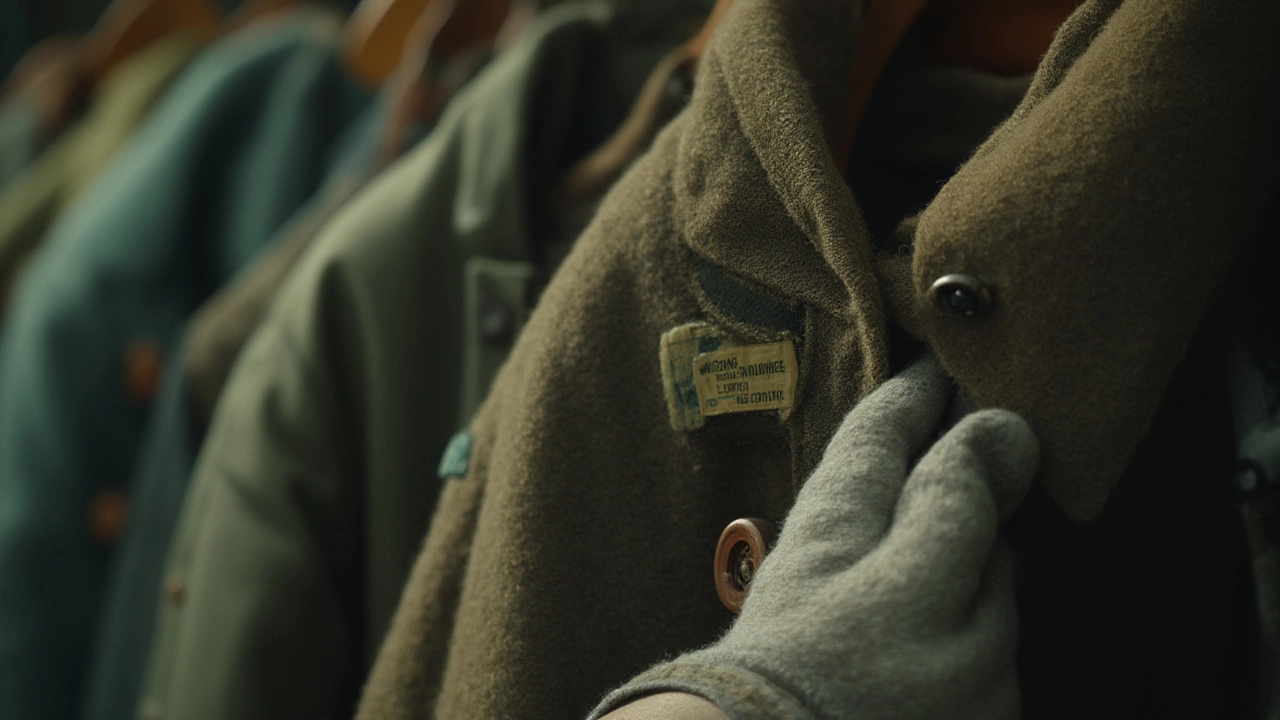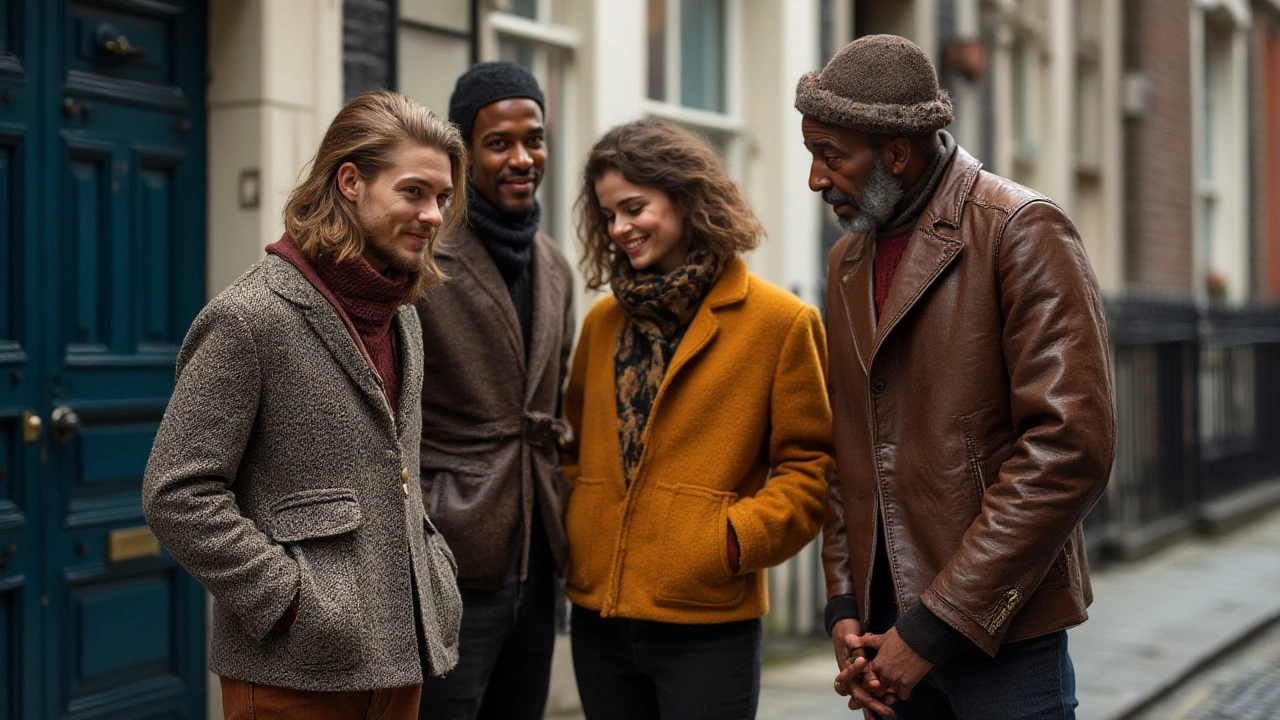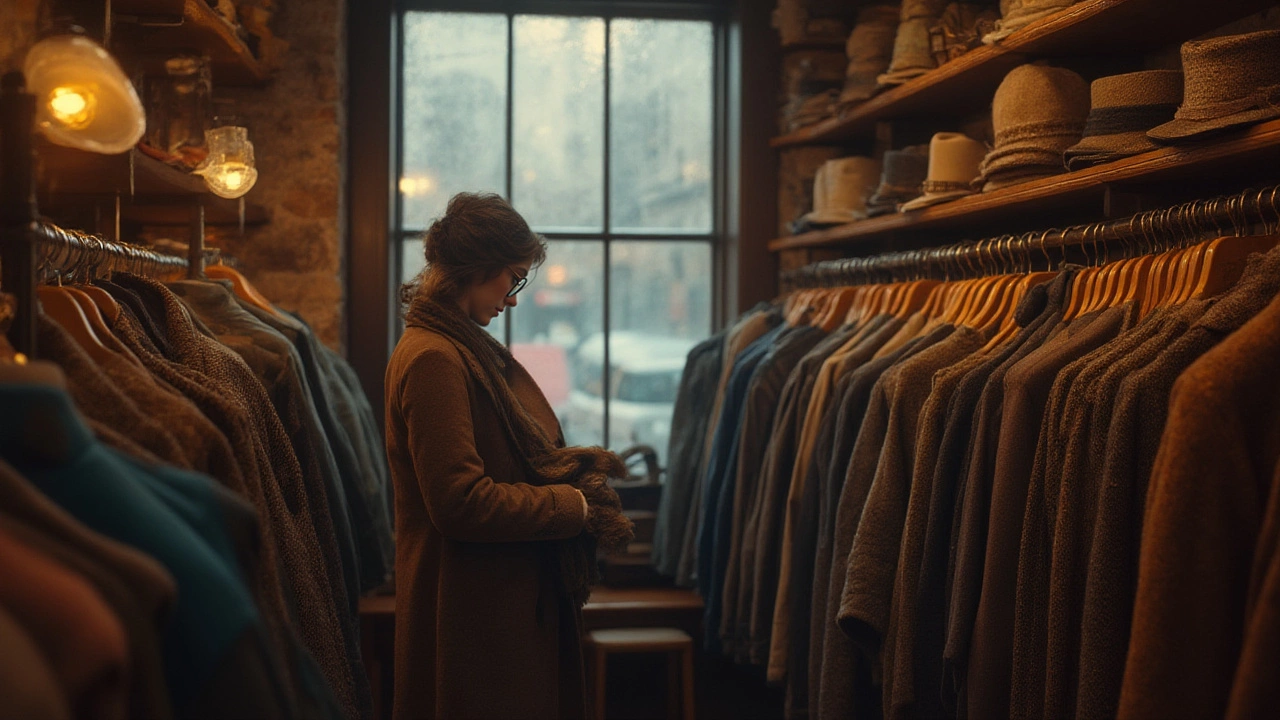Digging through rail after rail at Dublin’s George’s Street Arcade, the search for a real vintage jacket is less about luck and more of an art. The Irish market, famous for its quirky fashion sense and thriving second-hand scene, is a jungle of style treasures and sneaky fakes. Every week, people right across Ireland—from the Liberties to Limerick’s Milk Market—wonder if the Levi’s denim or Barbour wax jacket they’ve found for a tenner is the real deal or just a clever knock-off. It’s easy to get duped when the stall is buzzing and the seller’s promising “genuine 80s sportswear, boss!” If you’ve spent time hunting at Siopaella or watching the TikToks from Shutterbug in Kilkenny, you’ll know the thrill—and the risks—of trusting a label alone.
Local Hotspots: Where Do the Vintage Pros Hunt in Ireland?
If you’re serious about finding vintage jackets, you have to know where dedicated Irish hunters look. Yes, there are the online haunts: Depop and Vinted are awash with “rare” finds, but nothing beats the hands-on experience of a real Irish shop. Think Tola Vintage on Temple Bar or the legendary Harlequin—these places are like museums for classic threads. Markets like Merrion Square’s monthly flea or Cork’s Marina Market attract serious vintage sellers who’ll chat about provenance while you browse. Even charity shops like Barnardo’s in Rathmines or Vincent’s in Galway have their secret days when they drop unsorted stock brimming with retro gems—locals know to turn up early, queue, and never ask for staff to ‘check the back.’
But this isn’t all about Dublin. Limerick’s Lucky Lane, The Loft in Galway, and Kilkenny’s Folkster have hardcore fans, each with their own twist on curation. The Irish scene’s obsession with sustainable fashion means a dedicated following, and regulars get quick at recognising styles specific to decades: a 1990s Adidas track jacket won’t look quite like the new stuff on Grafton Street. Some shops partner with festivals like Electric Picnic or Fleadh Cheoil, selling out-of-the-box retro jackets each summer. If a jacket’s popping up at every third stall in quick succession, question its origin—it might be a ‘reworked’ modern piece rather than bona fide vintage.
The Tell-tale Signs: What Makes a Vintage Jacket Genuine?
Labels. It sounds basic, but in Ireland, knowing your labels is gold. Big names like Levi’s, Burberry, or Filson didn’t always use their current tags. Levi’s switched its tab font and fabric multiple times—mid-80s Irish imports often have orange or red tags, not white. Barbour’s ‘Made in England’ label is a must for jackets from the 70s and 80s, and you’ll sometimes find retailer stamps from legendary old shops like Brown Thomas. Study the stitching: old jackets are usually double-stitched, with thick thread and brass or wooden buttons that have seen actual weather, not just a washing machine.
Material ages differently depending on Ireland’s damp climate. Older leather jackets grown on this island often develop a patina unique to the wet air—think less shine and more soft, worn-in comfort that new fakes struggle to duplicate. Real waxed cotton (like from Barbour or Belstaff) will feel heavier and might even have the musky smell of peat smoke if it lived in a West Cork shed. Fakes often skip these details, and you’ll spot stiffer fabrics or zips that catch.
Irish jackets from the 70s and 80s also kept their old habits. Think interior labels in Gaeilge (Irish language) or old store names nearly everyone’s mam remembers. Look for local oddities, say, Donegal tweed linings or Murphy’s & Gunn hang tags. Sometimes, buttonholes will be a touch lopsided—old sewing machines weren’t always perfect, but they gave character. On the other hand, neat, machine-perfect lines give away a modern factory job. Don’t be afraid to turn a jacket inside out in front of a seller, even at a busy Dublin stall—they expect it, and it weeds out the sellers who don’t really know their stuff.
Then there’s the wear. Genuine *vintage jacket Ireland* finds will have natural wear at the cuffs or elbows, showing gentle fraying rather than obvious, artificial ‘distressing.’ If seams or tags look too new, even when the jacket supposedly dates back to Thin Lizzy’s heyday, raise an eyebrow. Irish jackets really get battered—between rain, muddy gigs, and bikes down by the Liffey, they pick up life scars.

Decoding the Irish Vintage Jacket Market: How Fakes Sneak In
Vintage fashion’s explosive popularity in Ireland hasn’t just brought sellers from London and Paris. Some sellers now source bulk ‘retro-styled’ jackets from Eastern Europe or Asia, aged with sandpaper or dyed to fake the look of something rare. Ireland’s demand for Americana—the 80s varsity jackets, Tommy Hilfiger windbreakers, or grungy Carhartt—means these fakes slip in and wind up at car boot sales, market stalls, and even established shops. If you’re a regular at the Dublin Flea, you’ve likely seen too-good-to-be-true racks with dozens of matching ‘vintage’ North Face puffer jackets. No real Irish wardrobe from the 90s saw that much uniformity.
There’s also a growing business in ‘reworked’ fashion—modern pieces upcycled with scraps of older material and then branded ‘vintage.’ In some Cork pop-up markets, you’ll spot jackets with a vintage logo patch stitched hurriedly over a polyester shell, original tags nowhere to be found. Good sellers in Ireland always share the item’s backstory, show a bit of its provenance (old shop receipts, transport tickets in the pocket, even a family anecdote). If all you get is a price and a quick “deadstock, mate,” keep browsing.
A trick for Ireland: listen to what’s being said in Irish. Some of the older sellers now use Gaeilge or regional slang to share real tips with experienced buyers—if a seller’s comfortable chatting in the language, odds are they’ve seen plenty of jackets come and go, and might be less likely to pass on a dud.
Practical Tips: How Can You Check for Authenticity On the Spot?
Bring your phone, but use it wisely. Quick label checks on Google Images can confirm you’re looking at a genuine 80s Berghaus or whether those ‘90s Nike tags match up. Take photos while inspecting so you can compare later—and never feel pressured by an eager seller to buy on the spot, even if there’s a queue behind you at a Dublin market.
Sniff test sounds weird but works: a real vintage jacket from an Irish home often has a unique old-clothes aroma, not the chemical reek you get from modern synthetics. Touch the lining—old Irish tweed and wool is heavier, pricklier, and just feels right. If you’re not sure, ask to see the seams, zips, and pockets. Metal zippers with branded pulls (like YKK) often outlast their newer plastic cousins.
If you’re at a charity shop, ask about return policies. Many Irish shops will tag an item as ‘retro’ rather than ‘vintage’ if they’re unsure of the year, so don’t be fooled by snazzy new price tags. Some shops also have experts volunteer for vintage events—if you see one scheduled for Oxfam in Cork or Enable Ireland in Waterford, go along and quiz away.
Keep an eye on size labels too—older Irish jackets will often be in imperial sizes (36, 40, etc.) or measured in inches, while new global fakes lean on S, M, L, XL. If the tag says “Made in Ireland” and looks faded, that’s a bonus. Still, the golden rule is to buy what you love and will wear, not just what sounds rare on TikTok or Instagram. Vintage is about expressing your own style, not chasing a trend.

Irish Vintage Jacket Culture: Tradition, Trends, and the Next Wave
There’s more to Irish vintage than nostalgia or bragging rights. Many Irish wearers love jackets that tell a story—maybe a bomber with a hurling club patch from the 60s, or waxed Barbours that shielded generations from Connemara rain. The climate itself shapes the market: heavier, hard-wearing jackets outsell thin windbreakers each winter. At events like the Dublin Vintage Factory kilo sales or the monthly “Retro Rummage” in Blackrock, you’ll spot old-school fashionistas hunting for rare mementos to wear at gigs in Whelan’s or just nipping to the local Tesco. Some collectors even loan or swap jackets during trad music sessions or at Roller Jam’s themed skate nights in Belfast—proof that the scene is as much community as commerce.
The new wave of Irish designers—think designers like Riona Treacy or labels based in Galway’s Latin Quarter—are rethinking how vintage can inspire fresh, sustainable fashion. Many Irish students now steer away from high street fast fashion, using platforms like RentMyWardrobe.ie to swap or rent jackets only seen in decade-old Lookbooks. Others just want something with more character than the throwaway stuff in the city centre chain stores.
So, if you’re navigating Ireland’s sprawling vintage jacket scene, focus on the details, don’t be shy about asking questions, and try to buy from sellers happy to explain how their pieces wound up here. There’s nothing quite like finding a battered old coat—leather soft, lining a bit threadbare, seam ripening with age—that makes you feel part of a story woven through Ireland’s wild weather, music, and endless craic. And let’s admit it: nothing looks better at a rainy Stoneybatter street gig than a true classic that’s already weathered a thousand storms.
